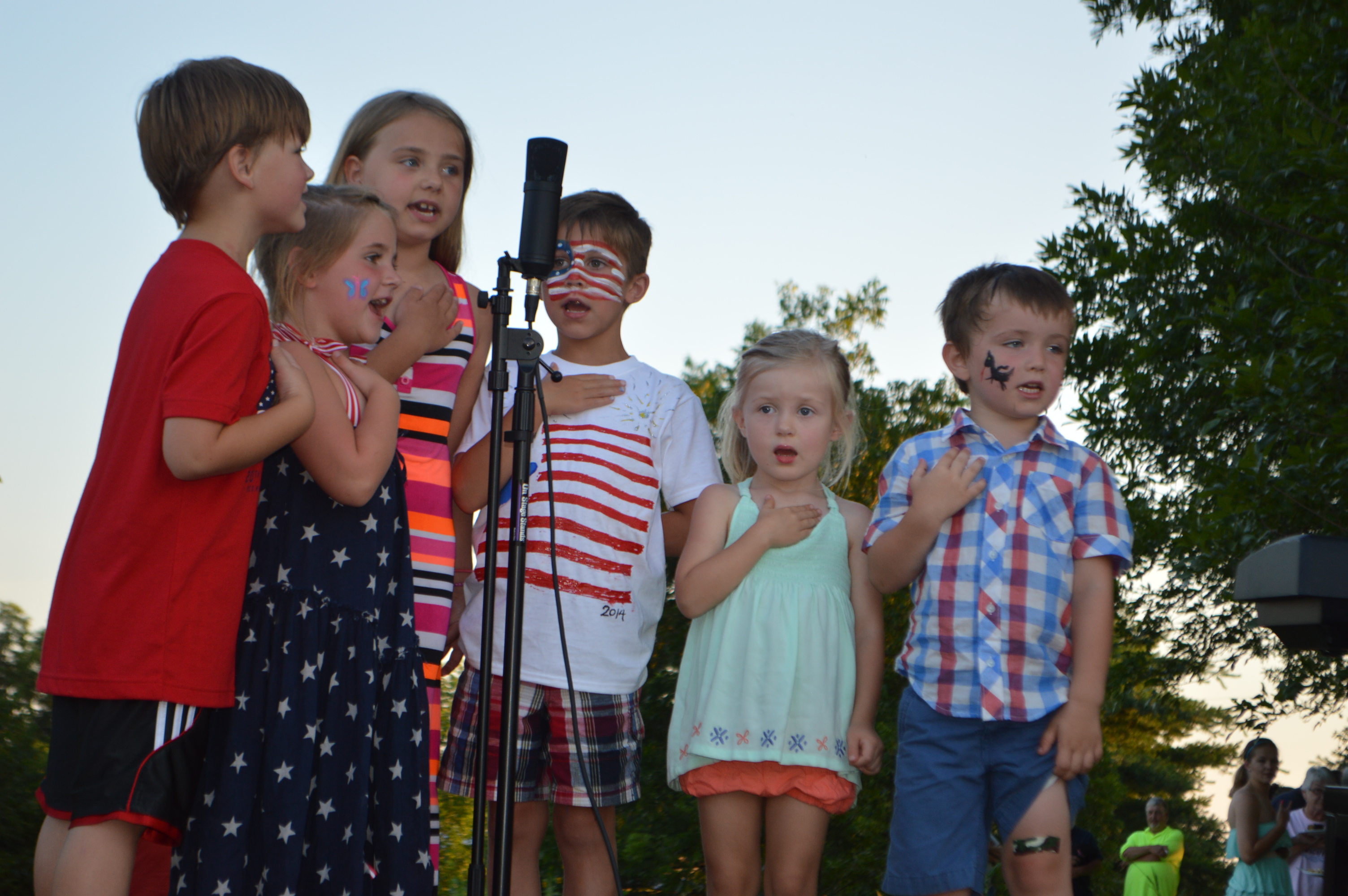I was at my niece’s high school graduation. Ready to see a new generation greet the world. The brightly-smiling students had entered the gymnasium clothed in their black-robed gowns. Cameras covered the faces of parents as they tried to get the most perfect shots. It was a glorious occasion.
Soon into the ceremony the talented choir began singing the United State’s national anthem: The Star-Spangled Banner.
I proudly stood on those bleachers and started belting the lyrics. But when I cast my eyes around that high-school I realized patriotism had not been taught to many in attendance.
And from the looks of things, might not have been taught for several generations.
People seemed confused as to whether they should stand or remain seated.
Hats still sat high on the heads of the men.
Many hearts were left uncovered while the crowd sang about the “broad stripes and bright stars.”
This lack of respect wasn’t out of deliberate anarchy, it was out of plain-old ignorance.
This high school is deep in the heartbeat of America. Where people fly flags and celebrate the Fourth-of-July with tears in their eyes. But the people in that gym didn’t even realize they were being disrespectful.
Instilling Patriotism
So who should take responsibility in teaching the younger generations the basics of patriotic etiquette?
The answer….parents.
As parents, it is our obligation to instruct our children about the traditions of our country and train them to be patriotic Americans.
Why should we teach patriotic etiquette?
Basic patriotism, such as saying the Pledge of Allegiance and singing the Star-Spangled Banner, makes us all pause and think about the brave sacrifices men and women have made throughout history to ensure our freedoms.
The flag and national anthem is a representation of “the country’s values and the ideals for which it stands.” [http://amhistory.si.edu/starspangledbanner/symbols-of-a-new-nation.aspx]
But mainly, it is about respect. We are showing we that we not only recognize, but that we value the risks, efforts, and sacrifices that people, just like us, have rendered throughout the history of the United States of America.
Whether we are at the Little League ball field, the Super Bowl, or a high school graduation we should follow proper protocol.
Saying the Pledge of Allegiance and singing the Star-Spangled Banner is a collective display of our our pride for the United States of America. It is a representation of our national identity.
We live in a democracy. And in this type of government institution all of our voices matter. Standing at attention, with our voices echoing a song that was written over two-hundred years ago, is a reminder that we all have a stake in the formation and future of our country.
We can’t let our voice be silent, and we can’t take half-hearted responsibility for this patriotic tasks of making sure that America continues to stand tall.
Each voice shapes our country.
So we must arise to stand tall. And put our hands over our hearts. And teach our young to do the same.
In our stillness we must thank God and thank our country.
God Bless America.
Personal Conduct during the playing of the National Anthem
When the flag is displayed —
A-individuals in uniform should give the military salute at the first note of the anthem and maintain that position until the last note;
B-members of the Armed Forces and veterans who are present but not in uniform may render the military salute in the manner provided for individuals in uniform; and
C-all other persons present should face the flag and stand at attention with their right hand over the heart, and men not in uniform, if applicable, should remove their headdress with their right hand and hold it at the left shoulder, the hand being over the heart; and
When the flag is not displayed —
All present should face toward the music and act in the same manner they would if the flag were displayed.
From: United States Code Title 36 http://www.ushistory.org/betsy/flagcode.htm
Personal Conduct during the Pledge of Allegiance.
Personal Conduct for the Pledge of Allegiance
The Pledge of Allegiance to the Flag: ‘I pledge allegiance to the Flag of the United States of America, and to the Republic for which it stands, one Nation under God, indivisible, with liberty and justice for all.’, should be rendered by standing at attention facing the flag with the right hand over the heart. When not in uniform men should remove any non-religious headdress with their right hand and hold it at the left shoulder, the hand being over the heart14. Persons in uniform should remain silent, face the flag, and render the military salute.
From: United States Title Code 36 http://www.senate.gov/reference/resources/pdf/RL30243.pdf
Further resources:
HISTORY: The Smithsonian Institute http://amhistory.si.edu/starspangledbanner/symbols-of-a-new-nation.aspx
PROTOCOL FOR THE FLAG: http://www.senate.gov/reference/resources/pdf/RL30243.pdf
Sarah Lewis Philpott, Ph.D lives in TN on a sprawling cattle farm where she raises her two mischievous children (with one on the way!) and is farm wife to her high school sweetheart. Sarah is represented by The Blythe Daniel Literary Agency . You can visit with Sarah at her All-American Mom blog where she writes about life on the farm and cherishing life in joy & in sorrow.




 Email
Email Follow Me
Follow Me
This makes me so sad! It absolutely is our job as parents, but it also makes me sad that patriotism is less and less a part of the public school system. Being respectful toward the country we live in is part of a general humility and respect for others – something that the next generation is doing less of as well. Thank you for the reminder that it starts at home!